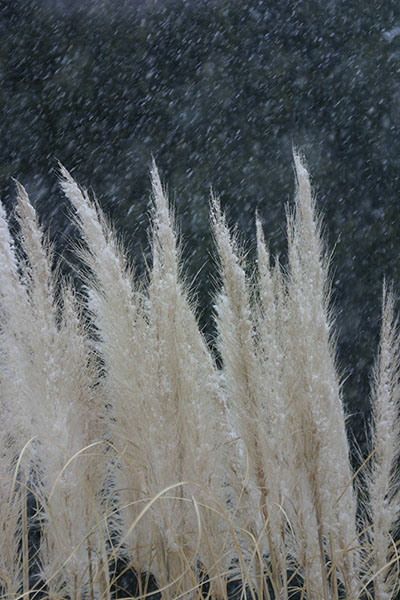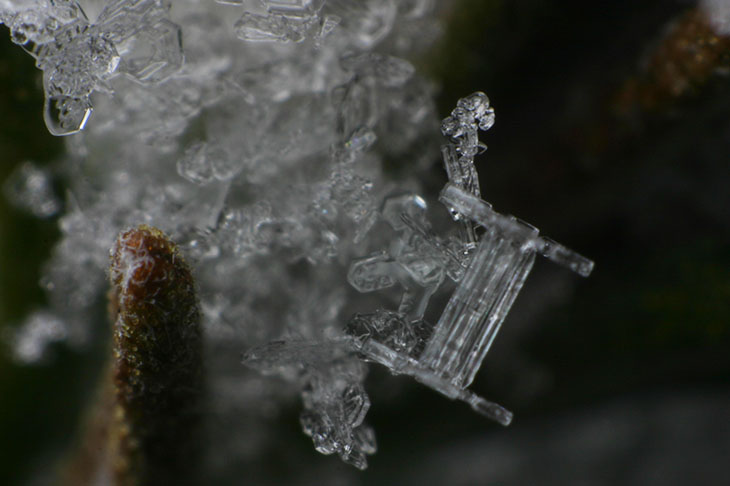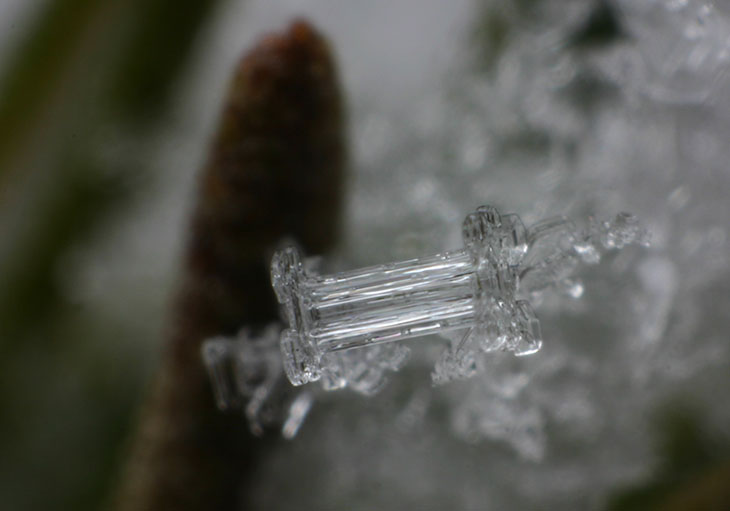 … I had done a post on the flowers in the yard. Things be a little bit different this year.
… I had done a post on the flowers in the yard. Things be a little bit different this year.
The place where The Girlfriend works had decided to close at 1 pm today on account of the impending winter storm. The only problem was, the storm rolled in with authority a little after noon, and by 1 pm the roads had become impassable. She ended up getting trapped in town (which is not the same one we live in) and is currently watching TV in a hotel room, waiting to see when the roads are going to become clear enough; the ice or freezing rain storm that is predicted to follow may delay this even more. She’s not happy right now.
I’m not going anywhere myself, and have amused myself to some small extent by trying to get some more detailed snowflake images. I’m actually quite limited in doing so, since for the whole afternoon the snow was coming down so hard that it was actually accumulating on the camera and flash, and I had to keep drying off the camera. Add in that the wind was gusty and so the rosemary bush was swaying a bit, making it hard to maintain tight focus at such magnification. I was using the bush because the thin needle-like leaves would support small clumps of snowflakes and provide a darker backdrop, which is what’s necessary to get any kind of detailed shots – a snowflake against a backdrop of snowflakes isn’t very distinctive.
The following shots aren’t up to par – I don’t have to tell you how small snowflakes are, and getting the precise focusing distance necessary just wasn’t coming together. Nonetheless, you can still see something exceptionally curious, and yes, this is exactly what it looks like.

Everybody knows the classic snowflake shapes, but quite often there are other shapes as well, and one of them is a hexagonal hollow column of ice, occasionally responsible for some pretty cool effects at night. However, these columns then developed snowflakes at the end, perpendicular to the columns, forming little spools of ice. While most of what I could see were classic flakes, I was able to find several examples of this peculiar formation – just, not get properly detailed images of them.

In other images some columns without the flakes can just barely be discerned, but there were several examples of these to be found (at least by my remarkably nearsighted eyes.) The temptation to reach out with something and pick up a single crystal, or move it into a better position, was overwhelming, but of course this wasn’t possible – even if I could get something small enough not to damage it and cold enough not to melt it, what was I going to do? After unloading the memory card twice to see if I captured a decent shot, I delayed a bit to dry off (the yard was at least 12cm deep in snow as I was taking these,) and went out with a different flash rig. By then, however, the conditions had changed to producing nothing but ice needles – still snow, to all appearances, but not looking much like snow at close examination.

Soon after this the snow changed to sleet, so I’ve probably lost my opportunity to get those cool little snow spools, for now. It’s a shame, because who knows what kind of conditions it takes to produce them, and when it’s likely to happen again in North Carolina?
When I was taking Earth Science in high school, back in central New York, the teacher had specially prepared microscope slides, able to capture a snowflake and form an impression of their shape before the flakes melted. We were all set to go outside when it was snowing and capture our own flakes to examine under a microscope – yes, in New York you’re often in class when it’s snowing, unlike here where they tend to cancel school if it even threatens to snow. That year, however, we never got a decent storm. At all. While learning meteorology, we’d been told to watch for the jet stream to come looping down out of Canada, bringing the arctic air and thus the winter weather with it, but it just kind of wimped out that year and we didn’t see much of anything. I remember this every time it snows here, and keep an eye out for the conditions to capture flakes, which are rarer than you might expect – they can melt easily in contact with any wet surface, and any surface not quite cold enough, and even if they make down intact, surface air can melt away their intricate arms; I’ve got plenty of pics of blobs and misshapen crystals. So, I keep trying.




















































